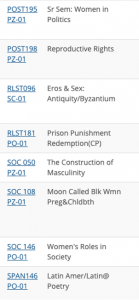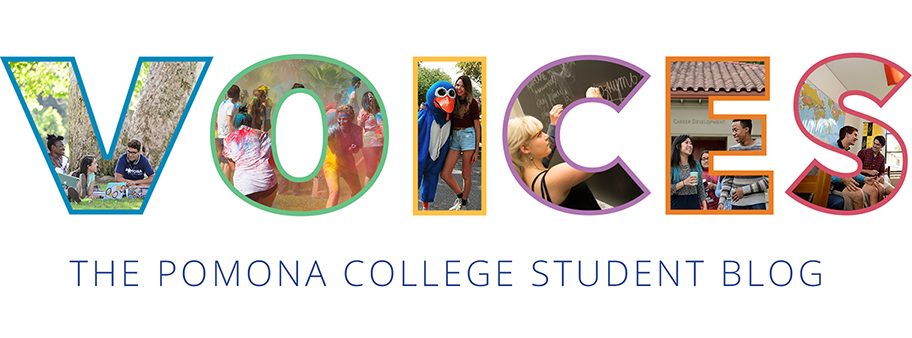By Chris Meng ’23
Help! It’s a new semester, which also signals the climax of uncertainty around class schedules. You would think that schedules are mostly set by the time classes start. For some students, that is the case. Major and general education requirements often shape the direction of some students’ semesters. However, in general, Pomona students have an amazing amount of flexibility to choose what they want to take and even change classes over the first two weeks of the semester.
 A liberal arts curriculum is a double-edged sword, as students have the ability to explore many different classes. What happens when there are too many interesting classes to choose from, namely 600 different courses at Pomona and 2,700 across the 5Cs? What happens when classes fill up and close? What happens when classes overlap with one another? Having been through three semesters of arduous decision-making, I can offer four additional options to consider when making a class schedule at Pomona to alleviate some of those tensions.
A liberal arts curriculum is a double-edged sword, as students have the ability to explore many different classes. What happens when there are too many interesting classes to choose from, namely 600 different courses at Pomona and 2,700 across the 5Cs? What happens when classes fill up and close? What happens when classes overlap with one another? Having been through three semesters of arduous decision-making, I can offer four additional options to consider when making a class schedule at Pomona to alleviate some of those tensions.
1) Partial-credit courses
Music lessons, physical education classes, and conversation classes bear partial credit. There are also numerous other options that are often overlooked. For example, some partial-credit offerings this semester include a half-credit class in the Claremont McKenna history department titled “Topics in American History: Readings in Modern Feminism,” a quarter-credit class in the Pomona physics department titled “Peer Mentoring in STEM,” and a half-credit class in the Pomona theater department titled “Alexander Technique.” I’ve also seen math, English, and government partial-credit courses. These mini-classes are often Pass/No Credit and have offered me a great way to explore topics in a learning environment without overloading my schedule too much.
2) Independent study and research

Admissions offices almost always provide statistics around what percentage of students do research before they graduate. However, people don’t always know that students can do research and get class credit under the name “Independent Study.” While research can also be done without credit, the credit option usually entails a greater commitment and some final product to demonstrate satisfactory progress throughout the semester. I pursued the credit option during my second semester in Professor Bacio’s CENTRO Lab in the psychological science department. However, students can also conduct their own independent projects under the guidance of a faculty member and similarly receive credit. When someone has a topic that they’d like to explore further or one that is not specifically offered at the Claremont Colleges, an independent study is especially useful.
3) Auditing courses
With a professor’s permission, students can “unofficially” take a class at the Claremont Colleges. However, there will be no notation on their transcripts and consequently, no credit received. If someone is extremely interested in taking a class but has a scheduling conflict or is simply too busy that semester, auditing can be a pathway that allows students to sit in on as many class sessions as they’d like and participate in activities and assignments without a grade. For example, I have a couple of friends who are auditing language classes this semester to maintain their skills. Auditing is a possibility available to students when, despite their best efforts, everything else fails to come through.
4) Petitioning to overload
 Worst comes to worst, students can petition the Academic Procedures Committee (APC) and request to go beyond the maximum course credit limit, which is either 5.25 or 6.0 credits (or, courses) depending on class year and academic standing. The APC “consists of three faculty members, the registrar, the dean of students, and two students.” I get the impression that a petition needs a particularly compelling reason to circumvent an academic policy, but I can’t say much more than that. Keep in mind that the credit limit is in place for a reason, as the college does not want students to drown in academic work.
Worst comes to worst, students can petition the Academic Procedures Committee (APC) and request to go beyond the maximum course credit limit, which is either 5.25 or 6.0 credits (or, courses) depending on class year and academic standing. The APC “consists of three faculty members, the registrar, the dean of students, and two students.” I get the impression that a petition needs a particularly compelling reason to circumvent an academic policy, but I can’t say much more than that. Keep in mind that the credit limit is in place for a reason, as the college does not want students to drown in academic work.
Four years will go by so fast at Pomona. Students have much power to shape their education, and I encourage everybody to take the initiative and tailor each semester so that it’s the experience that they’d like it to be. Luckily, peers and professors are there to advise students about classes in the spirit of collaboration and mentorship that percolates through so many aspects of the Pomona experience. Nonetheless, having too many interesting classes to choose from is hardly the worst problem to have.
